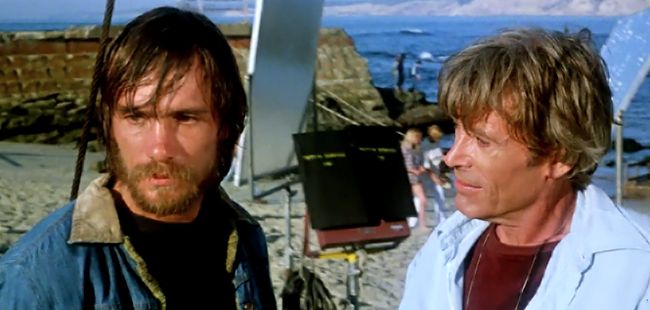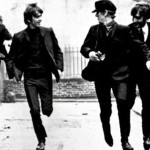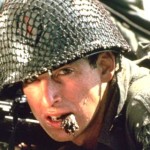
Richard Rush promises his video audience more than they’ll ever want to know about “The Stunt Man,” the director’s marvelous 1980 movie about the making of a movie. The Anchor Bay DVD set offers a graduate-level breakdown of the film, but it’s a lesson in guerrilla filmmaking and marketing that savvy film fans will savor.
The numbered limited-edition set offers a refreshed version of the film on a THX-certified disc and, on a second platter, Rush’s loopy 2000 documentary “The Sinister Saga of Making ‘The Stunt Man.’ ” (The films also are available separately.)
The “Stunt Man” DVD reflects the typical look of films shot in the 1970s, with some outside scenes looking flat and a bit weary. Inside scenes and night shots are considerably better, with rich colors and contrasts. The picture is presented in widescreen only (1:85:1), with the enhancement for 16×9 TVs. The documentary is full-screen.
“Stunt Man’s” new Dolby Digital EX and 6.1 DTS audio mixes are playful and especially active during the film’s many action scenes. The mixes beautifully render Dominic Frontiere’s versatile and infectious main theme, sending much of the music to the satellite speakers. The DTS seems a bit stronger than the Dolby (the film previously was available only in mono).
Starring Peter O’Toole, Steve Railsback and Barbara Hershey, “Stunt Man” follows a small-town Vietnam vet (Railsback) on the run after a mysterious crime. He encounters a film crew shooting a frantic World War I movie. The fugitive ends up replacing a drowned stuntman in order to cover his tracks — and those of the project’s godlike director (O’Toole). The running man’s adventure in filmmaking turns into a nightmare as he realizes that the director might be trying to kill him on camera.
The feature-length commentary includes almost all of the film’s key talent, including O’Toole, Railsback, Hershey and Alex Rocco. The tone is that of a family reunion, with the players describing the shoot as one of the best times of their lives. Writer-director Rush in particular is in for lavish praise. “He’s an original,” Hershey says. “There is no one else like him.” Says Railsback, “The crew would have killed for him.”
The actors warmly remember their experiences working with the affable O’Toole as he gave what is considered one of his best performances. “If you can’t work with Peter O’Toole, get out of the business,” Railsback says. While many assume that O’Toole was playing Rush, the actor reveals that his model was David Lean.
Much is made of the film’s themes of perception and paranoia. The film features “the reality of illusion and the illusion of reality” and creates “a whole new syntax of filmmaking,” O’Toole says. Professor Rush points out so many interlocking elements that one wonders how many were discovered after the fact.
A big part of the fun is entering a world in which nothing is what it seems. Rush says his technique was a kind of Hitchcock in reverse, in which the audience only knows what the hero knows. Railsback, who had just played Charles Manson in “Helter Skelter,” appears in almost every scene as the mystery unravels around him. (He did many of his stunts under the watchful eye of real-life stuntman and fellow cast member Chuck Bail.)
“Stunt Man” was mostly shot at the Hotel del Coronado near San Diego. Rush rented out the top floor of the main building and staged his action scenes on the roof while guests gawked. The Del had just achieved historical status, adding to the many complications — like explaining the presence of palm trees on a WWI battlefield.
The campy “Sinister Saga” documentary chronicles the movie’s long and winding road to theaters. “The film wasn’t released; it escaped,” says O’Toole, who helped Rush fight for the project. Rush (“Getting Straight”) tried to get the film made in the early 1970s, then spent the decade trying to land financing while doing nine rewrites.
Rush’s difficulties continued once the film was in the can. Forced to market it himself, he made deals with critics in Seattle and elsewhere: After private screenings, if they loved “Stunt Man,” the review would run before the film opened in their cities. If not, the piece ran later. The ploy worked: The buzz built and Rush had a portfolio of rave reviews before his film finally opened to packed houses at the Avco in Westwood. A trio of major Oscar, DGA and WGA noms and dozens of mentions on critics’ year’s-best lists bring us to a happy ending.
The double-disc set includes two excellent scenes that Rush cut to bring his film in under two hours. Other features are Rush’s introduction to both films, as well as the usual trailers, advertising art and photo galleries. The script and director’s notes can be punched up via disc to those with DVD-ROM setups. The first disc includes a nifty THX calibration program.



Leave a Reply